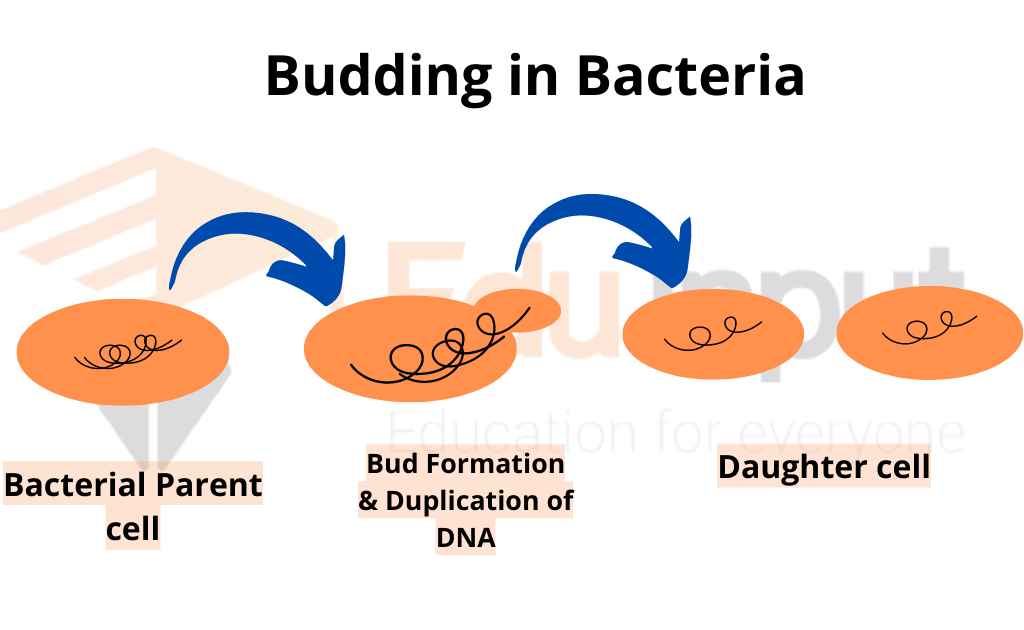Asexual Reproduction in Bacteria
a) Binary Fission:
- In binary fission, a single bacterial cell divides into two daughter cells. At first, the bacterial cell reaches critical mass in its form and cell components.
- The circular double-stranded DNA of the bacteria undergoes replication and new complementary strands are formed.
- These two strands of DNA are then moved to the different poles of the cell and a transverse septum then takes place and develops in the middle region of the cell which separates the two new daughter cells and thus binary fission I completed.
- It is a rapid process and takes minutes to complete.

b) Conidia Formation:
- The formation of conidia takes place in filamentous bacteria such as Streptomyces through the formation of a transverse septum at the apex of the filament.
- The part bearing the conidia is called the conidiophore and after it is detached from the mother cell, in a suitable substratum it germinates giving rise to new mycelium.
- This type of asexual reproduction is also called fragmentation.

c) Budding:
- In this method of reproduction, the bacterial cell develops a small swelling at one side which continuously increases in size.
- At the same time, the nucleus also undergoes division where one part with some cytoplasm enters the swelling and the other part remains with the mother cell.
- The outgrowth is called the bud and it eventually gets separated from the mother cell by a partition wall. This method of reproduction also comes under vegetative reproduction in bacteria.
- Example: Rhodomicrobium vannielii

d) Cysts:
- Cysts are formed by the deposition of additional layers around the mother cell and are the resting structure during unfavorable conditions.
- When conditions are favorable again, the mother cell behaves like its normal self again. Example: Azotobacter.

e) Reproduction through endospore formation:
- Endospores in a bacterial cell are formed during stressful conditions such as desiccation and starvation.
- They contain a central protoplast, and a core consisting of DNA, ribosomes, enzymes and the t-RNA, everything necessary for the formation of a new cell.
- Only one endospore is formed in one bacterial cell and on germination, it gives rise to a new bacterial cell.
